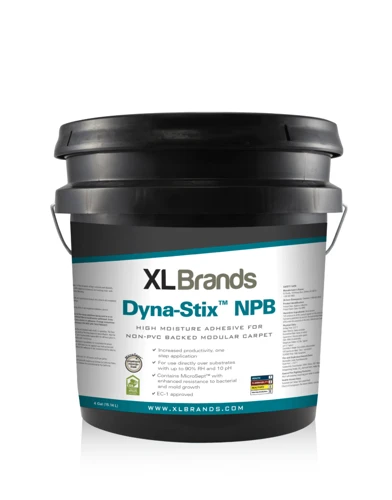Duct tape, known for its strong bonding capabilities and versatility, is a staple in many toolboxes. However, once removed, the adhesive can leave a stubborn, sticky residue that’s challenging to eliminate. This “duct tape glue,” as it is commonly referred to, is designed to be moisture-resistant and durable, which is why it’s so difficult to remove. Understanding the composition of this adhesive is the first step towards effective duct tape glue removal, ensuring surfaces are left clean and unblemished.
Effective Methods to Remove Duct Tape Residue
When it comes to removing duct tape residue, there are several tried-and-tested methods that can help restore your surfaces to their original state. Each technique has its own advantages and is suitable for different types of surfaces and situations.
Method 1: Scrape Off the Adhesive
- Use a plastic scraper or a credit card to gently peel away the residue.
- Be careful not to scratch or damage the surface underneath.
- This method is most effective when the adhesive is not too firmly set.
Method 2: Warm Water Treatment
Applying warm, soapy water can soften the sticky tape residue, making it easier to wipe away. A clean cloth soaked in the warm solution should be laid over the area, allowing it to penetrate the adhesive before attempting to wipe it off.
Method 3: Dissolving Residual Adhesive
Various solvents can break down the compounds in the glue, allowing for a more thorough duct tape glue removal. When using solvents, it’s crucial to ensure proper ventilation and to test the solvent on a small, inconspicuous area first to prevent damage to the surface.
Method 4: Lubrication for Residue Removal
Lubricants like WD-40 can be sprayed onto the adhesive to loosen its grip on the surface. After a few minutes, the residue can often be wiped away with minimal effort.
Method 5: Applying Heat for Residue Removal
Heat can be a powerful ally in the battle against duct tape glue. A hairdryer set on medium heat and directed at the glue can soften it enough to facilitate sticky tape residue removal with a cloth or scraper.
Cleaning Duct Tape Adhesive with Household Items
For those who prefer using readily available items, household products can be surprisingly effective in cleaning duct tape adhesive.
Cleaning with Rubbing Alcohol
Rubbing alcohol can break down the adhesive without damaging most surfaces. Apply it to a cotton ball or cloth and rub it onto the affected area until the residue lifts away.
Treating Residue with Cooking Oil
Cooking oil is not just for the kitchen; it can also weaken the bond of duct tape residue. Let the oil sit on the adhesive for a few minutes, and then gently remove it with a cloth.
Removing Stubborn Residue with Specialized Solvents
If household items don’t do the trick, a solvent for duct tape residue designed for heavy-duty cleaning might be necessary. These specialized products are formulated to tackle the toughest glues.
Choosing the Right Duct Tape Glue Remover
Selecting the best way to remove duct tape adhesive often depends on the nature of the surface and the extent of the residue. Factors such as material sensitivity, area size, and adhesive age should guide your choice of removal method.
Preventative Tips for Sticky Tape Residue
Prevention is always better than cure. To avoid the hassle of removal, consider using less aggressive adhesives for temporary fixes or applying a protective layer between the tape and the surface. This can significantly reduce the amount of residue left behind.
Troubleshooting Common Issues in Duct Tape Glue Removal
Even with the best intentions, issues can arise when attempting to get rid of duct tape marks. Residue that has been left for an extended period may require repeated treatments, and some surfaces may be too delicate for certain removal methods. Always start with the gentlest approach and escalate as necessary.
FAQs: Get Rid of Duct Tape Marks
- Q: Can vinegar be used to remove duct tape glue?
- A: Yes, vinegar can soften the adhesive, allowing for easier removal.
- Q: Is it safe to use a blade to scrape off residue?
- A: While a blade can be effective, it’s risky and can easily damage surfaces. It’s better to use a plastic scraper.
- Q: How can I remove residue from delicate fabrics?
- A: Test a gentle solvent on an inconspicuous area first, and use a soft cloth to dab rather than rub.
When it comes to dealing with stubborn adhesives, it’s not uncommon to get stuck trying to remove residue from various surfaces. If you’re struggling with the remnants of duct tape glue, you might be interested to know that similar tactics can be applied to other sticky situations. For those dealing with eyelash extensions, figuring out what removes lash extension glue can be a lifesaver. Similarly, if you’ve used lash glue for temporary falsies, you might want to check out our guide on what removes lash glue. And for the DIY enthusiasts who frequently use super glue, our tips on how to remove nail glue could also come in handy when you find yourself in a sticky bind.
Conclusion: Best Way to Remove Duct Tape Adhesive
In conclusion, the best way to remove duct tape adhesive varies based on the situation, but with the right approach and materials, stripping duct tape glue can be a hassle-free process. By understanding the nature of duct tape glue and experimenting with different techniques, you can find a method that works effectively for your specific needs.


